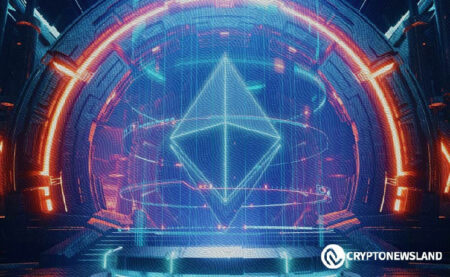Among the cornerstones of blockchain ecosystems, Ethereum has redefined thoughts about decentralized technologies. As a leading blockchain platform, Ethereum allows for the creation of smart contracts and decentralized applications (DApps) that operate without third-party interference. This is important because it secures the environment in which code is executed, storing data among nodes.
Nevertheless, with its growing popularity, scalability remains a major issue for Ethereum. An increase in the number of transactions and smart contracts being run on the network leads to congestion and an increased node load, affecting performance and the user experience. In response to these challenges, developers have been working on Ethereum Purge Strategies to simplify protocols and reduce node loads, thus scaling up capacity and efficiency.
Ethereum’s Scalability Challenges
Scalability challenges arising from Ethereum’s design
On the other hand, Ethereum’s innovative architecture nevertheless presents scalability challenges. The limited throughput of the Ethereum network is one major issue, as it can only process a given number of transactions per second. Ethereum Virtual Machine (EVM) and consensus mechanism limitations, like all nodes in a system having to validate and execute every transaction, have led to such limitations in their throughputs. Consequently, during high activity, the network becomes congested, leading to longer processing times for transactions and expensive fees.
Furthermore, the increasing size of the Ethereum blockchain has its scalability issues. This makes smaller nodes unable to participate effectively in the network; as more smart contracts and transactions are added to the blockchain, this increases storage and processing requirements for nodes. Thus, bigger nodes with numerous resources dominate, resulting in centralization and undermining Ethereum’s decentralized nature.
Impact of these challenges on network performance and adoption
These scalability challenges have significant performance and adoption implications for Ethereum networks. For instance, long transaction processing time frames and a high fee discourage many users, including developers, from using Ethereum when creating decentralized applications. This also affects DeFi apps, such as gaming platforms, among others, thereby limiting growth potential and innovation.
Moreover, other blockchains offer faster throughput rates at lower transaction costs than Ethereum, which will be impaired by its inability to scale. Given these facts, individuals may move on to different chains, cutting down Ethereum’s market share and thus rendering it irrelevant in the blockchain space.
The Ethereum Purge Strategy
An Ethereum Purge Strategy is an approach to resolving scalability challenges in Ethereum networks by streamlining the protocol and minimizing node burden. Let’s delve into how it tackles challenges related to blockchain size and node loads within the Ethereum network below:
- Simple Protocols: A Purge Strategy reduces the complexity of Ethereum’s protocols, improves their efficiency, and facilitates network operations and user interactions.
- Lessening the Burden on Nodes: The purge strategy reduces the burden on nodes by optimizing mechanisms used in storing and retrieving data, resulting in faster performance and better response times.
- Ensuring an Optimal Size for the Blockchain: In state pruning and data compression methods, the purge strategy doesn’t allow the blockchain to grow too large; thus, it ensures storage effectiveness while maintaining data integrity.
- Improving Network Performance: The streamlined Protocols offered by Purge Strategy ensure better network performance hence leading to reduced latency as well as quicker transaction speeds.
- Scalability and Efficiency Boosters: Additionally, using innovative technologies such as sharding and state channels, the purge strategy paves the way for scalability as well as efficiency on the ethereum platform that caters to increasing demand with new use cases arising.
- Optimized Node Operations: Purge Strategy has developed resource-efficient node operations that minimize processing overhead and, hence, facilitate smooth network running during high load times.
Buckle up, as Ethereum is about to be ‘Purged.’ The co-founder, Vitalik Buterin, has given us a thrilling roadmap that proposes an evolution of the protocol. Having seen the success of the Dencun upgrade, Buterin is supercharging Ethereum’s move with EIP-4444, a game changer that will wipe out historical data overheads for node operators. This EIP-4444 ‘purge’ will blow away technical debt and start a supernova of decentralization as nodes retain numerous copies of historical data. Get ready for a slimmer and meaner Ethereum, where simplicity is king and scalability soars skyward.
Benefits of the Purge Strategy
The Ethereum Purge Strategy has various advantages that aim to enhance the scalability and efficiency of the Ethereum network.
- Enhanced Scalability: The Purge Strategy makes Ethereum more scalable by reducing blockchain size and node loads. This allows for higher throughput and faster transaction processing, which benefits ETH casinos. Casino players can enjoy better scalability and smoother and more efficient transactions than ever before.
-
Improved Network Performance: This is achieved by simplifying protocols and optimizing node operations, improving network performance with smoother and more reliable user experiences. That said, users can now bask in the glow of enhanced network performance and experience a seamless crypto gaming experience with innovative ETH online casinos.
-
Enhanced Transparency and Security Features: The Ethereum Purge is built on the Ethereum network, which is known for its unmatched decentralization and transparency in general. The Purge is instrumental in creating a safe and transparent ecosystem for online gambling and gaming enthusiasts. This feature, powered by the Ethereum network, facilitates secure transactions, fosters player trust, and authenticates gaming activities. Such transparency helps to authenticate gaming activities, thereby drawing many players to play at Ethereum casinos. The enthusiasts find top-notch Transparency and Security at top Ethereum casinos, ensuring peace of mind and enjoyable gaming experiences.
-
Lower Transaction Fees: Due to its increased scalability and efficiency, the Purge Strategy leads to lower transaction fees, making it more affordable for users and developers. This has enabled greater access to various services, including gaming. Ethereum transactions have been made relatively more affordable than ever before due to the great reduction in costs.
- Greater Decentralization: By eliminating obstacles to participation, the Purge Strategy fosters decentralization within the Ethereum network, creating an inclusive and resilient ecosystem. This strategy also enhances inclusion to ensure that premier online ETH casinos are part of a broader and robust ecosystem.
Implementing the Purge Strategy
Implementing the Purge Strategy requires a combination of technical advancements and protocol changes to simplify Ethereum’s architecture and lighten the load on its nodes.
There are several steps involved in implementing the Purge Strategy. First, developers optimize Ethereum’s protocol for data storage and processing. This implies that state pruning approaches should be employed to reduce blockchains’ sizes. In addition, node operations are improved to increase efficiency while decreasing processing burdens. Ultimately, these efforts aim to enhance scalability and network performance while maintaining the integrity and security of the Ethereum system.
Conclusion
The Ethereum Purge strategy is an optimistic solution to scalability issues experienced by the Ethereum network. Streamlining protocols, reducing node loads, and optimizing blockchain size enhance scalability, efficiency, and accessibility. The successful implementation of this strategy could lead to significant improvements in the overall performance and usability of the Ethereum network, thereby increasing its adoption space through further innovations in decentralized technologies.
Read the full article here









